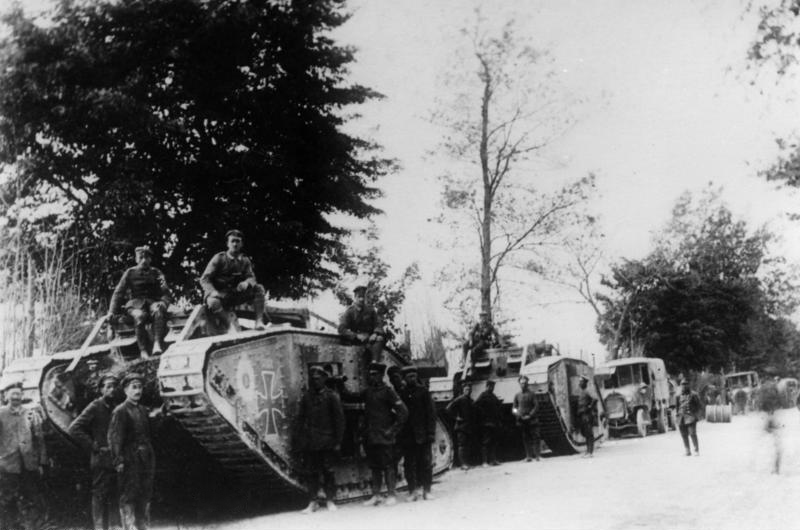 above is 75mm bought in prague in the 80's in my collection. below is machine gunner by collectingtoysoldiersblog read it.
above is 75mm bought in prague in the 80's in my collection. below is machine gunner by collectingtoysoldiersblog read it.The battle began on 15 July, when 23 German divisions of the First and Third stormtrooperarmies—led by Bruno von Mudra and Karl von Einem—assaulted the French Fourth Army under Henri Gouraud east of Reims (the Fourth Battle of Champagne (French: 4e Bataille de Champagne)).
 The U.S. 42nd Division was attached to the French Fourth Army and commanded by Gouraud at the time. Meanwhile, 17 divisions of the German Seventh Army, under Max von Boehn, aided by the Ninth Army under Eben,
The U.S. 42nd Division was attached to the French Fourth Army and commanded by Gouraud at the time. Meanwhile, 17 divisions of the German Seventh Army, under Max von Boehn, aided by the Ninth Army under Eben,  attacked the French Sixth Army led by Jean Degoutte to the west of Reims (theBattle of the Mountain of Reims (French: Bataille de la Montagne de Reims)). Ludendorff hoped to split the French in two."
attacked the French Sixth Army led by Jean Degoutte to the west of Reims (theBattle of the Mountain of Reims (French: Bataille de la Montagne de Reims)). Ludendorff hoped to split the French in two."
The German attack on the east of Reims was stopped on the first day, but west of Reims the offensive fared better. The defenders of the south bank of the Marne could not escape the three-hour fury of the German guns. Under cover of gunfire,stormtroopers swarmed across the river in every sort of transport—30-man canvasboats or rafts. They began to erect skeleton bridges at 12 points under fire from those Allied survivors who had not beensuppressed by gas or artillery fire American M1917 Brodie steel helmet of the US 3rd Division of the American Expeditionary Forces (A.E.F.) in World War I (Dagnas et. al., Casques Vol I., p. 232-3). This is the US-made version of the British type 'B' version of the helmet, with a crimped metal rim and rough finish on a matte surface, and the standard leather and canvas web liner and leather chin-strap, with rubber cushioning on the sides but no rubber 'donut' cushion on the top of the liner (as on a British-made helmet). This helmet bears the emblem of the Third (Marne) Division, painted on a sanded-off patch of the helmet front. This division fought in Chateau Thierry, Argonne, at the Meuse, and at the Rhine in France. .
Under cover of gunfire,stormtroopers swarmed across the river in every sort of transport—30-man canvasboats or rafts. They began to erect skeleton bridges at 12 points under fire from those Allied survivors who had not beensuppressed by gas or artillery fire American M1917 Brodie steel helmet of the US 3rd Division of the American Expeditionary Forces (A.E.F.) in World War I (Dagnas et. al., Casques Vol I., p. 232-3). This is the US-made version of the British type 'B' version of the helmet, with a crimped metal rim and rough finish on a matte surface, and the standard leather and canvas web liner and leather chin-strap, with rubber cushioning on the sides but no rubber 'donut' cushion on the top of the liner (as on a British-made helmet). This helmet bears the emblem of the Third (Marne) Division, painted on a sanded-off patch of the helmet front. This division fought in Chateau Thierry, Argonne, at the Meuse, and at the Rhine in France. . Some Allied units, particularly the 3rd U.S. Infantry Division "Rock of the Marne", held fast or even counterattacked, but by the evening, the Germans had captured a bridgehead either side of Dormans 4 mi (6.4 km) deep and 9 mi (14 km) wide, despite the intervention of 225 French bombers, which dropped 44 short tons (40 t) of bombs on the makeshift bridges.
Some Allied units, particularly the 3rd U.S. Infantry Division "Rock of the Marne", held fast or even counterattacked, but by the evening, the Germans had captured a bridgehead either side of Dormans 4 mi (6.4 km) deep and 9 mi (14 km) wide, despite the intervention of 225 French bombers, which dropped 44 short tons (40 t) of bombs on the makeshift bridges. The British XXII Corps and 85,000 American troops joined the French for the battle, and stalled the advance on 17 July.
The British XXII Corps and 85,000 American troops joined the French for the battle, and stalled the advance on 17 July.
 Some Allied units, particularly the 3rd U.S. Infantry Division "Rock of the Marne", held fast or even counterattacked, but by the evening, the Germans had captured a bridgehead either side of Dormans 4 mi (6.4 km) deep and 9 mi (14 km) wide, despite the intervention of 225 French bombers, which dropped 44 short tons (40 t) of bombs on the makeshift bridges.
Some Allied units, particularly the 3rd U.S. Infantry Division "Rock of the Marne", held fast or even counterattacked, but by the evening, the Germans had captured a bridgehead either side of Dormans 4 mi (6.4 km) deep and 9 mi (14 km) wide, despite the intervention of 225 French bombers, which dropped 44 short tons (40 t) of bombs on the makeshift bridges. The British XXII Corps and 85,000 American troops joined the French for the battle, and stalled the advance on 17 July.
The British XXII Corps and 85,000 American troops joined the French for the battle, and stalled the advance on 17 July.
No comments:
Post a Comment